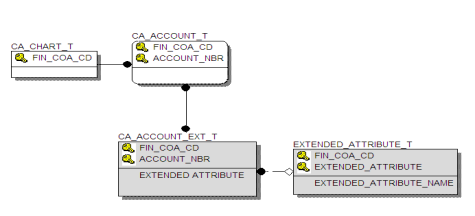OLE allows you to add attributes to your maintenance tables in the event your institution requires additional attributes for reporting purposes. These attributes are called extended attributes.
Extended attributes can either be free text fields or have an associated reference table to supply valid values. The data dictionary can be configured by your technical staff in the following manner:
An extended attribute displays on the associated e-doc
An extended attribute can be made required or optional
An extended attribute can be available as search criteria and/or in the search results in a lookup.
How to add extended attributes to OLE: The steps in creating extended attributes involve your technical staff for the most part. Additional technical documentation is available. For example, a community college is required to track multiple additional attributes on the Account Table to meet the reporting requirements of community colleges. Each of these fields has a list of valid values that must be maintained in the system. One extension table with the multiple fields is added to the Account Table. These multiple new fields appear on the Account document. A new reference table for each new field is created to maintain the list of valid values for the new fields. Each of the reference tables appears as a new document on the Maintenance menu tab of OLE.

Dos
Business rules can be applied to extended attributes the same as they could be applied to any other attribute delivered with OLE.
Modification to include security and encryption can be applied to extended attributes as well just as the other existing OLE attributes.
The data definition language, including referential integrity for extension tables are the responsibility of the implementing institution.
Don'ts
Extended attributes are not intended to add additional fields to the accounting string and should not be added to tables such as GL Balance or GL Entry tables.
Extended attributes should not be added to the workflow tables.


